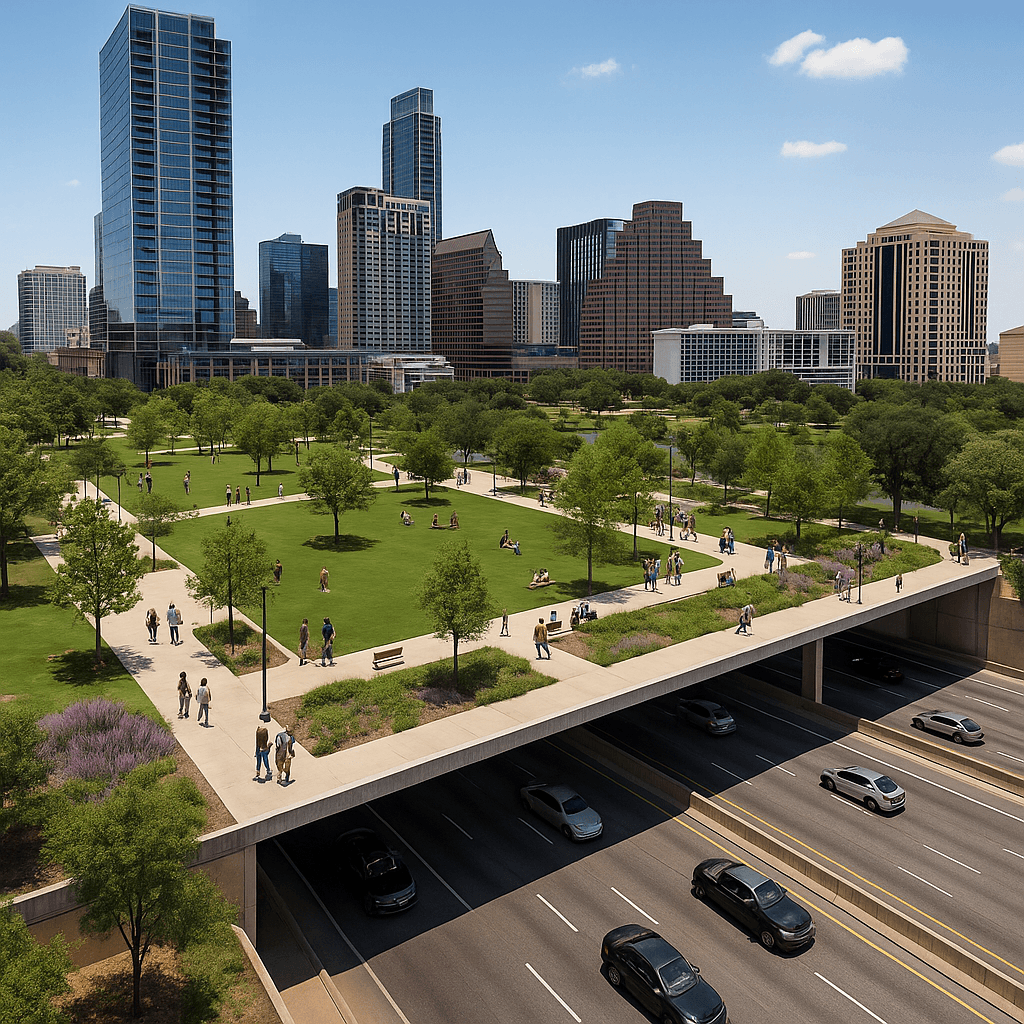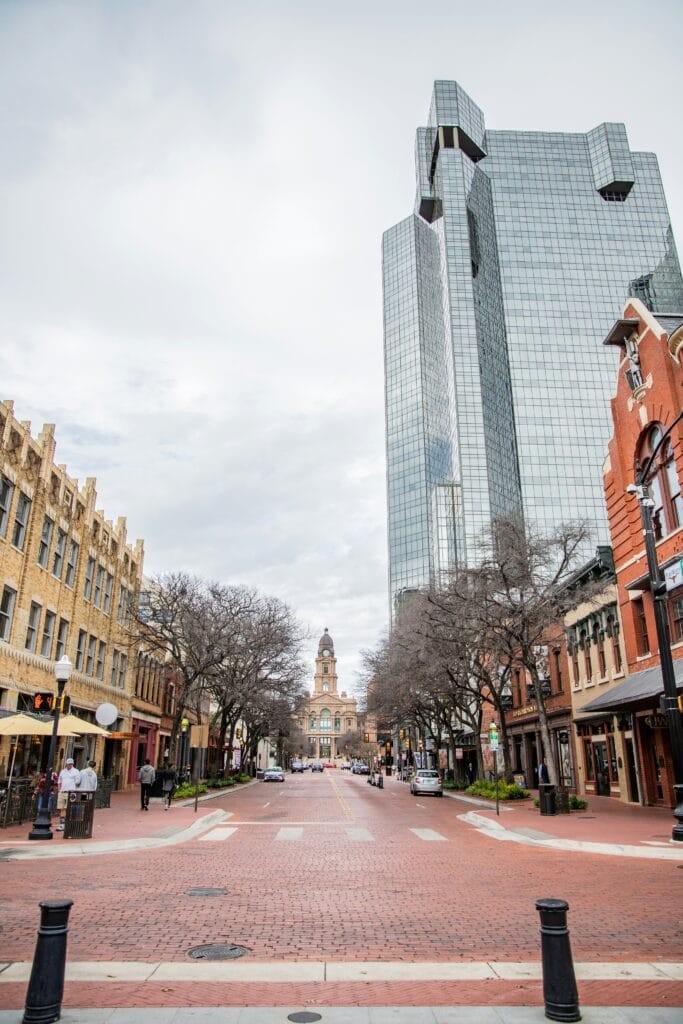What the Final I-35 Cap and Stitch Plan Means for Downtown and East Austin
Well, I think its finally over. We have a plan for what is going to happen with the new I-35. There has been a debate for years over what the new I-35 would look like – especially through downtown Austin. I have written about it multiple times in this blog. And now, it appears that debate is finally over. And while its not the plan I would choose – moving I-35 to 130 and making the current I-35 a boulevard – at least there will be some caps through downtown. So lets talk about what the City Council Approved.
The Austin City Council’s I-35 Plan
On May 22, 2025, the Austin City Council approved a “Cap and Stitch” plan for the new I-35. The plan will cost approximately $105 million and will hopefully help reconnect downtown Austin with East Austin by constructing highway deck plazas over Interstate 35 (I-35).
The Cap and Stitch project involves building “caps,” or deck plazas, over sunken sections of I-35, creating new public spaces such as parks, trails, and community areas. Additionally, “stitches” refer to widened east-west crossings designed to enhance pedestrian and cyclist connectivity across the highway. The Texas Department of Transportation (TxDOT) is currently undertaking the $4.5 billion Capital Express Central Project to expand and lower I-35, providing an opportunity for the city to implement these caps and stitches concurrently.
The Path to Approval: Debates and Deliberations
The journey to the May 22 approval was long and treacherous. For a long time, I wasn’t sure if we were ever going to reach an agreement.
When TxDot first announced the I-35 plan, there were a lot of competing ideas for how it should look through Austin. As I wrote above (and in the past), I have always supported the plan to move I-35 to 130 and make downtown a boulevard. But I knew that was unlikely to happen – even though it makes the most sense.
Instead, I also previously wrote that we should cap it all and make a giant park – much like Clive Warren Park in Dallas. Well all the competing ideas lead to a lot of debate over what to do.
It has always seemed like a lot of people supported some kind of cap over the downtown area. But the question was always who would pay for it and how much of a cap. Initially, the comprehensive Cap and Stitch plan was estimated to cost over $1.4 billion, raising concerns about the city’s financial capacity to support such an ambitious project. Compounding these concerns was the uncertainty surrounding a previously awarded $105 million federal grant, which was placed under review due to federal budgetary constraints .
Council members were divided on the scope and funding of the project. Some advocated for a scaled-down version focusing on essential roadway elements to support future caps, while others emphasized the long-term benefits of a more comprehensive approach. Council Member Mike Siegel expressed reservations about the project’s cost, suggesting that funds might be better allocated to immediate needs such as affordable housing and climate initiatives.
In contrast, Council Members José “Chito” Vela and Zo Qadri highlighted the project’s potential to rectify historical injustices and promote community unity. They argued that investing in the Cap and Stitch plan would create lasting public spaces and opportunities for economic development, drawing inspiration from successful projects like Dallas’ Klyde Warren Park .
Details of the Approved Plan
The final approved plan is a compromise of the different council positions. The $104 million investment focuses on constructing the foundational roadway elements necessary for future caps and stitches. Specifically, the plan includes:
- Caps between Cesar Chavez and Fourth Streets, Fourth and Seventh Streets, and 11th and 12th Streets.
- Two 300-foot stitches to enhance pedestrian and cyclist crossings between 41st Street and the Red Line in North Austin
While this funding does not cover the construction of the caps themselves, it ensures that the necessary structural components are integrated into TxDOT’s ongoing I-35 project, preserving the opportunity to develop the caps in the future.
Looking Ahead
Look, the final plan isn’t the ideal that I would have hoped for. But this is politics. We almost never get the ideal. So we have to settle for the potentially good. And the approval of the Cap and Stitch plan represents a significant milestone in Austin’s efforts to address historical divisions and promote equitable urban development. By investing in the foundational elements now, the city positions itself to create transformative public spaces that will benefit future generations.
What the Final I-35 Cap and Stitch Plan Means for Downtown and East Austin Read More »

